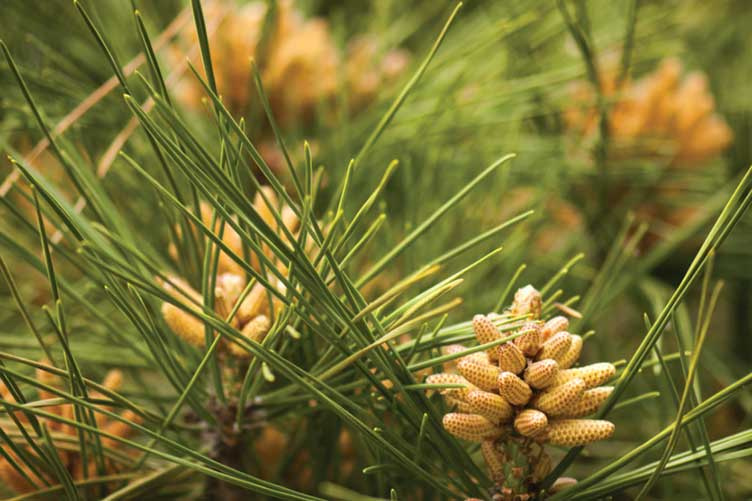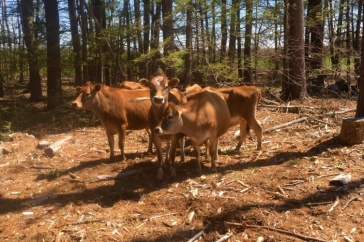
Imagine a class full of students arrayed around a white pine tree in a 30-meter square, staring up through toilet paper tubes at the foliage. Now imagine a satellite 500 miles above the earth taking photos of that same tree, in an effort to measure the density and health of the forest canopy. And imagine researchers at UNH matching the students' data to the satellite images, square to pixel.
This is what citizen science looked like before the term was even coined. It's all part of the Forest Watch program, which for 23 years has enlisted science teachers and students at schools around New England to help UNH scientists monitor the region's forests.
"The program is fantastic for students because it's authentic, hands-on, scientific inquiry," says Dr. Barrett Rock, professor emeritus of forestry and botany.
Rock started the program in 1991—coincidentally, a year after a massive overhaul of the federal Clean Air Act—because he was alarmed at the deterioration in the region's white pines and suspected it was due to air pollution. White pines are a sentinel species whose condition is a good indicator of overall forest health or distress.
Each school chooses five white pines on or near campus. And each spring, students—armed with simple measuring tools they make themselves from toilet paper tubes, paper, string, and steel nuts—measure each tree's diameter, height, and canopy density. Then they examine the needles for chlorophyll and moisture levels, as well as damage from ground-level ozone, or smog. They also send needle samples to UNH for analysis in a spectrometer, and their canopy observations are matched to the satellite pictures using precise GPS coordinates.
"The satellite sees what the spectrometer sees, and the spectrometer sees what the students see, using homemade tools," Rock says.
Two decades of student research show the trees have grown healthier overall since 1991. But trees on the Seacoast, where there is more smog, fare worse than trees in the mountains, where there is less pollution.
Now Forest Watch researchers have received further validation of the students' observations. Data on ground-level ozone collected by the New Hampshire Department of Environmental Services shows that 1991 was the worst year for smog--and that as ozone levels have dropped, thanks to ever-tighter Clean Air Act limits, the pines have flourished, Rock says.
"It's quite shocking. I didn't expect this dramatic a correlation," he says. "These environmental policy decisions can make a real difference. They can make the air healthier for us to breathe, and they can help the trees."
Originally published by:
UNH Magazine, Spring 2014 Issue
-
Written By:
Katharine Webster | freelance writer





















































